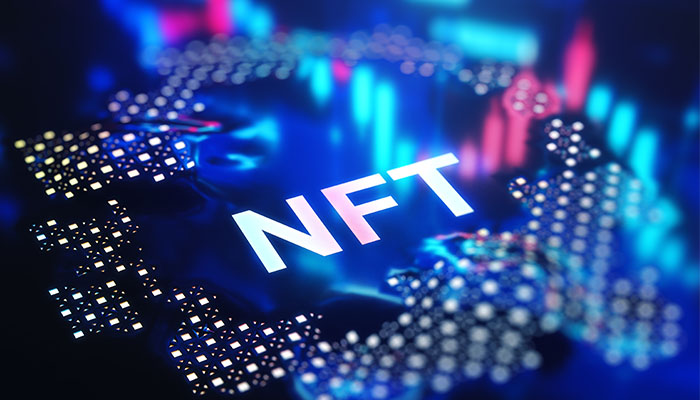What is NFT? Digital Assets, Uses and Future
An NFT, or Non-Fungible Token, is a digital asset built on blockchain technology. The term “non-fungible” means that each NFT is unique and cannot be exchanged for another token. For example, one Bitcoin can be exchanged for another Bitcoin (fungible), but each NFT is unique and cannot be copied. This uniqueness allows NFTs to be used as proof of ownership and authenticity in the digital world.
NFTs are typically created on the Ethereum blockchain with the ERC-721 or ERC-1155 standards. Each NFT is backed by metadata, which shows what the token represents (an image, video, music or an in-game item) and who owns it. Thanks to the transparent nature of the blockchain, the history and ownership of an NFT can be verified by anyone.

How Does an NFT Work?
NFTs are based on blockchain technology. Blockchain is a decentralized digital ledger and all transactions are recorded on it. When an NFT is created (minting), this token is recorded on the blockchain and acquires a unique identity. For example, when an artist sells a digital work as an NFT, the buyer receives a digital certificate of authenticity. This certificate shows who owns the work and its past transactions.
Popular platforms for NFTs include marketplaces such as OpenSea, Rarible and Foundation. On these platforms, users can buy, sell or trade NFTs. Also, thanks to smart contracts, artists can earn royalties on every sale.
Use Cases of NFTs
NFTs are more than just a trend in the digital world. Here are the most popular uses of NFTs:
1. Digital Art and Collecting
The most well-known use case for NFTs is digital art. By tokenizing their works as NFTs, artists can offer them for sale on a global market. For example, Beeple’s “EVERYDAYS: The First 5000 Days” sold for $69 million in 2021, marking a milestone in the NFT world. Art lovers can verify the authenticity of these works on the blockchain.
Collecting is also an important part of NFTs. Projects like CryptoPunks and Bored Ape Yacht Club represent limited edition digital characters. These collectibles are seen as both a status symbol and a means of investment.
2. Gaming and the Metaverse
The gaming world is another area where NFTs are revolutionizing. In games like Axie Infinity, The Sandbox and Decentraland, players can buy or sell in-game items (swords, clothes, terrain) as NFTs. This gives players full control over their digital assets. For example, a player can make real money by selling a rare game item as an NFT.
With the Metaverse, assets such as land, houses or avatars in virtual worlds are also traded as NFTs. This is redefining the concept of ownership in the digital world.
3. Music and Entertainment
Musicians use NFTs to sell digital content such as albums, singles or concert tickets. For example, Kings of Leon released an album as an NFT in 2021. NFTs allow artists to connect directly with their fans, cutting out the middleman. In addition, limited edition digital concert tickets create a unique experience for fans.
4. Real Estate and Physical Assets
NFTs are not only used in the digital world, but also in the physical world. In the real estate sector, the title deed of a house can be tokenized as an NFT. This makes the transfer of ownership fast and secure. Similarly, physical assets such as luxury watches, cars or jewelry can also be represented digitally with NFTs.
5. Identity and Certification
NFTs also have potential in digital identity and certification. For example, a diploma or certificate can be issued as an NFT. This ensures that documents are protected against forgery and makes it easier for employers to verify documents on the blockchain.
Advantages and Disadvantages of NFTs
Advantages
Uniqueness and Ownership: NFTs prove the authenticity of digital assets and transparently record ownership.
Global Reach: Artists and creators can present their work in a worldwide marketplace.
Royalties: Thanks to smart contracts, creators can earn automatic royalties on every sale.
Investment Potential: Rare NFTs can become attractive to investors with an increase in value.
Disadvantages
Environmental Impacts: Ethereum’s energy consumption has led to criticism about the environmental impact of NFTs. However, Ethereum’s transition to Proof of Stake mitigates this issue.
Market Volatility: The NFT market is highly volatile and values can change rapidly.
Royalty-Free Copying: The digital file of an NFT can be copied, but the original ownership remains on the blockchain.
Future of NFTs
NFTs are no longer just a part of the digital world, but are becoming integrated with the real world. With concepts such as Web3, the metaverse and decentralized finance (DeFi), the use cases of NFTs will expand. For example, the use of NFTs in education, healthcare and government services may increase. Moreover, with more environmentally friendly blockchain solutions, the sustainability of NFTs will also improve.
However, regulations and standards will play a critical role in the maturation of the NFT market. How states tax NFTs and their legal status will shape the future of the industry.
How to Start NFTs?
If you want to step into the world of NFT, you can follow these steps:
Create a Wallet: Get a crypto wallet like MetaMask.
Buy Cryptocurrency: Ethereum (ETH) is often used for NFT transactions.
Choose a Platform: Sign up for an NFT marketplace such as OpenSea, Rarible or Foundation.
Create or Buy NFTs: You can tokenize your own creations or purchase existing NFTs.
Tip: Research the credibility of the project before buying NFTs and only use trusted platforms.
In conclusion, NFTs are a powerful tool that is redefining the concepts of ownership, creativity and investment in the digital world. Revolutionizing art, gaming, music and more, this technology will play an important role in the digital economy of the future. However, it is critical to be conscious and consider the risks when stepping into this world.


